How to Beat the Post-Olympics Slump

Carpe Diem
If you have a body, you’re an athlete. Just do it. Impossible is nothing. All in. I will.
With the Olympics beginning to fade to a distant memory except for a few, still-bright stars, it’s not quite as easy to get up off the couch and be inspired for your daily run or HIIT routine. When the dog days of summer are upon us, it’s tempting to sit back and let time pass us by. While sportswear slogans like the ones above are calculated for profit, the ideas behind that motivating rhetoric may be just what you need to hustle when everything around you seems to be slumping.
The Advantage
Keys to a successful reboot are simpler than you might think. It’s easy to get caught up in making a creative plan for working out, only working out if all the variables are perfect, or neglecting to think outside the box for getting up and getting out there. In the words of Nike, you have to “just do it.” Here are a few thoughts to ponder as you get back into a good routine:
Every little bit counts: You don’t have to have a fitbit to apply this principle – if you purpose to only work out 10 minutes every day, by the end of the week you’ll have logged at least an hour and 10 minutes of sweating it out. That’s better than waiting until you have an hour and 10 minutes to go to the gym and only working out twice a month, with that daily plan, you’ll have about four hours and 40 minutes over the course of the month – twice what you would if you waited for the perfect day. You have a busy life. Just do it – you might be surprised how much time you actually log if you just commit to something bite-sized.
Go all in: Katie Ledecky, Michael Phelps, and Simone Biles would be the first to tell you that they didn’t just wake up gold medalists one day. What did happen in a day was the decision to go all in. If you want to be an elite athlete, go all in. If you want to be a distance runner, go all in. If you want to be able to do the splits at 55 years old, go all in. Make a decision, make a plan, and then commit to it, heart and soul. You don’t have to be an Olympian to be an athlete, and you don’t have to be elite to accomplish your fitness goals, but you will have to train and push your limits and commit if you’re going to make it happen.
Find what works: Nike says, “If you have a body you’re an athlete.” What they mean is, everybody can do something that makes them feel great and is great for them. Pick what works for you – do you get a burst of energy at 5pm? Run then instead of trying to get up earlier. Do you love weights and hate cardio? Find someone who loves cardio and hates weights and commit to helping each other stay balanced by working out together regularly. Do you push harder in a group? Find a class or a running group and commit to it. Carilion Wellness in Botetourt offer over 100 classes and free child care, so if you’re in the area, that might be a great option. But even if you’re not, just do a little research – there’s almost certainly a local fitness center that can help you get on track. In Roanoke, there are studios for everything from Pure Barre to Zumba to Crossfit. Everyone can do something; find what works for you.
The First Step
That’s all great advice, but it still leaves the ball in your court – you have to take the first step. If you need a little more motivation, Lifehacker has some great practical tips and tools to help you get out there and go play. Happy exercising!
Copyright: ammentorp / 123RF Stock Photo
About the Writer
tech
How Working Out Helps Keep Pain Away

Yoga and Pilates are exercises that improve core strength and flexibility, which can help with back pain.
For years, patients and medical professionals have debated the question of whether exercise is good for back pain or whether it makes it worse.
Research has found that movement can help with back pain, and during the last decade, the opinion of the medical community has shifted away from bed rest and toward exercise, even for those who did not previously work out every day. However, when doctors recommend exercise to their patients, they often encounter a hurdle: the patient’s fear of making pain worse.
The most fearful patients often stand to benefit the most from exercise, simply because it can give them a different view of the relationship between pain and exercise. Cardiovascular (aerobic) exercise can increase mobility and help circulation, and strengthening the core muscles closest to the spine can protect against future pain.
How to Begin
If you have a chronic pain condition like lower back pain or hip, knee, or shoulder problems, you shouldn’t begin an exercise program without guidance.
An experienced chiropractor will typically do a postural assessment to observe how you sit, stand, and walk to help determine what exercises may be appropriate, given your condition. Postural imbalances, for instance, carrying a child on one hip or a bag on one shoulder can trigger pain in the back, hips, knees, and shoulders.
Some simple, safe stretches that can help alleviate back pain include:
- Lie on your back on a carpeted floor or mat and rest your legs on a couch, chair, or ottoman, so that your legs are completely supported from the heels to the back of the knees.
- Lie on a stability ball, face down, and let your body mold to the sides of the ball.
- Try the “happy baby” yoga pose: lie on your back and hold your knees to your chest.
- Perform squats to reduce pain and improve mobility.
Exercises to Help Chronic Pain
Beyond simple stretches, one of the most important types of exercise to improve chronic back and joint pain is cardiovascular exercise. Some types to try include:
- Walking briskly on a treadmill
- Using an elliptical trainer
- Aquatic exercise, from swimming laps to an organized water aerobics class
In addition to cardiovascular training, try strength training, either with free weights or machines to guide movement and simulate support. Pilates and yoga can help improve core strength and flexibility.
Exercises to Avoid
Those with back and joint problems that cause significant pain should typically avoid high-impact exercise like running or organized sports like basketball and soccer, which involve jumping, landing, shifting, and moving in a lot of different directions.
Golf and tennis tend to put a great deal of strain on the back because they use one side of the body more than the other. Although you don’t necessarily need to give them up entirely, just cut back a bit or find other ways to strengthen the neglected side of the body, such as Pilates or rotating exercises with a medicine ball.
Exercise and Pain Relief
Although chronic back pain can reduce a person’s quality of life, the right exercise program can dramatically improve it. There’s no reason to be sitting around the house in pain.
If you’re thinking of starting an exercise program, the doctors at Tuck Chiropractic Clinic can give you the advice you need to proceed safely.
Image by wavebreakmediamicro / 123RF Stock Photo.
About the Writer
tech
Dance Your Way Back Out There
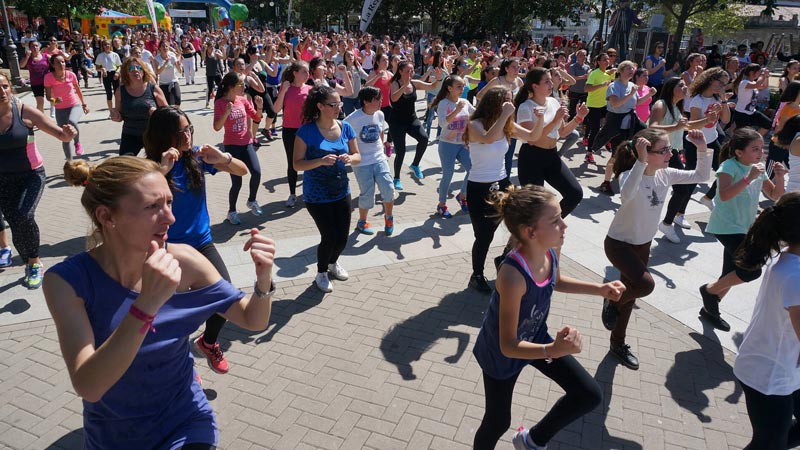 A low impact exercise like Jazzercise is making a comeback.
A low impact exercise like Jazzercise is making a comeback.
Getting back out there can be can be intimidating. Sometimes it’s because you received an injury and things just haven’t been the same since. Other times, it’s because you were never really “out there” in the first place and you may feel like it’s too late. You might even be insecure about looking like a novice. The reality is, while you are busy coming up with reasons why you can’t, your life is continuing to move past you at a rapid pace. There is no better time than now to make a change in the direction of wellness.
One way you could get back out there is to literally dance like no one is watching. Join a dance fitness class like Jazzercise, which offers low impact and high impact options, fitness in a group setting, and is just plain fun! It can be overwhelming to walk into a new workout facility, surrounded by mirrors and sometimes even flexing gym-goers. At Jazzercise there are no mirrors—on purpose. This welcome change allows all participants to enjoy the music, movements, and focus on wellness without being distracted by reflections in all directions.
As Alisa Hewitt, the owner of the New River Valley Jazzercise center explained, “Jazzercise combines aerobic, dance-based exercise with strength training to create a one of a kind workout. In 60 minutes we complete not only a cardio workout, but also include strength training targeting all of the major muscle groups.”
An important aspect of Jazzercise for those that are taking a journey back into fitness, especially from injury, is that there are low impact options. Certain classes are dedicated entirely to low-impact workouts and each class can be modified to offer a low-impact approach. Alisa explained, “In our classes, low impact means only that we remove the “hop” and work with an emphasis on muscle rather than momentum.” There is less impact on the joints and back, which is music to the ears of anyone fighting for fitness while overcoming injury. Alisa elaborated, “This total body combination is excellent for cardiovascular conditioning, muscle development, and toning, leading to more endurance and increased energy levels.”
This type of fitness routine is also cross-generational and done in a group setting. Working out in a group context helps with motivation, accountability, and camaraderie. Young or old, friendships are formed while you are sweating it out. We are more likely to stick with exercise we enjoy and developing relationships is a great way to ensure enjoyment. It also turns the Jazzercise classes into a big dance party—and who doesn’t love a good dance party?
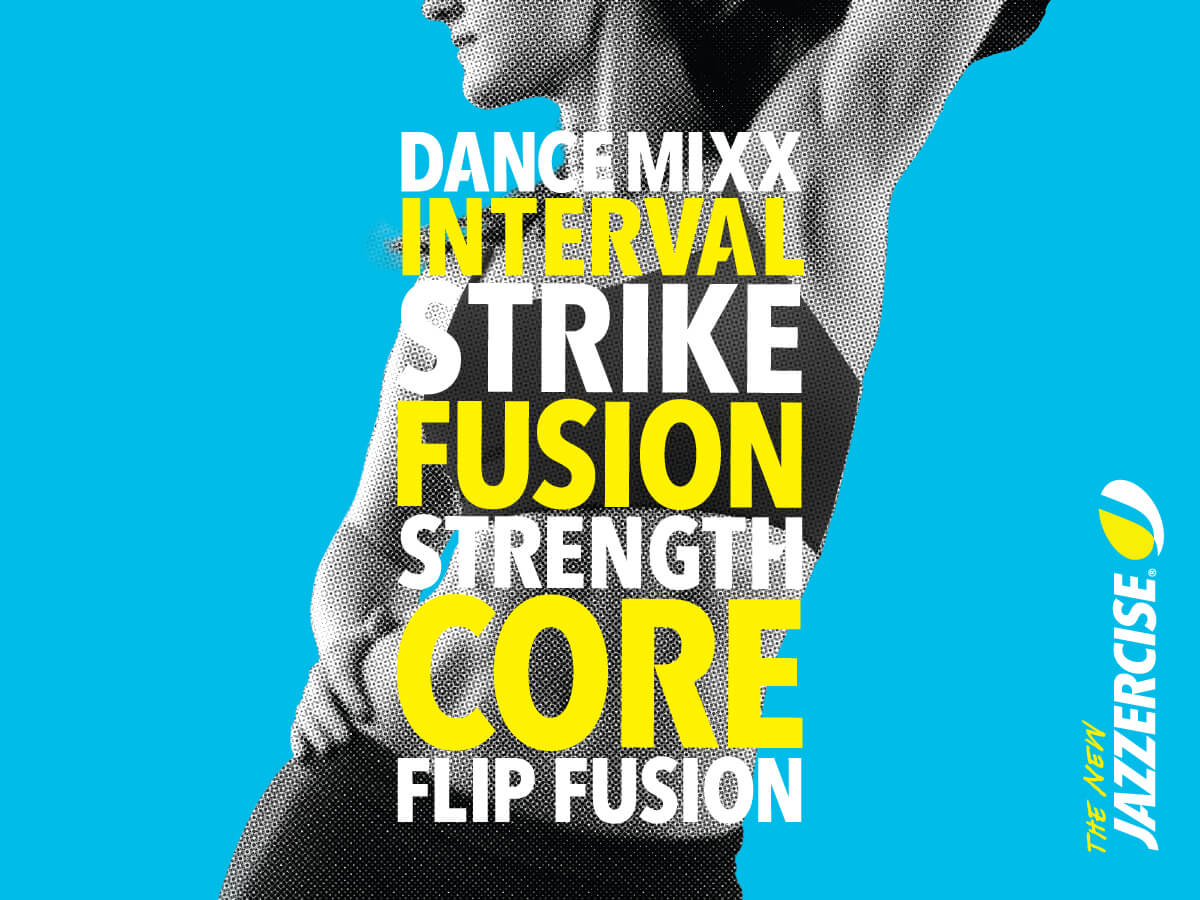 Jazzercise is a high-intensity workout that includes cardio and strength training. Speaking of dance parties—we need to take a moment to gush about how fun dance fitness, like Jazzercise, can be. Life can be so serious between demands at work, demands at home, and sad news stories in the media. Some days you’ve just got to dance! Jazzercise is a complete body workout and occurs in a supportive environment all while artists like Justin Bieber, Bruno Mars, and Pitbull play the background. The routines are fun but also intentionally designed with wellness in mind. Alisa said, “All routines are professionally choreographed and reviewed by an exercise physiologist to ensure safety and effectiveness. “ For one hour, Jazzercise allows participants to step out of their daily demands and just exist in the context of fun music and health-benefitting dance moves. It’s a winning combination (pun absolutely intended).
Jazzercise is a high-intensity workout that includes cardio and strength training. Speaking of dance parties—we need to take a moment to gush about how fun dance fitness, like Jazzercise, can be. Life can be so serious between demands at work, demands at home, and sad news stories in the media. Some days you’ve just got to dance! Jazzercise is a complete body workout and occurs in a supportive environment all while artists like Justin Bieber, Bruno Mars, and Pitbull play the background. The routines are fun but also intentionally designed with wellness in mind. Alisa said, “All routines are professionally choreographed and reviewed by an exercise physiologist to ensure safety and effectiveness. “ For one hour, Jazzercise allows participants to step out of their daily demands and just exist in the context of fun music and health-benefitting dance moves. It’s a winning combination (pun absolutely intended).
“It can be intimidating to begin a new fitness program and to take that step into a new facility. Group fitness classes, like all of our classes at Jazzercise New River Valley, are a great way to get started,” affirmed Alisa. You have to start somewhere when getting back into a wellness routine or establishing a new routine altogether. Make sure that you endeavor on your wellness journey with a great support system that is aware of your fitness goals and unique circumstances. Talk about your goals with your chiropractor as well as any other key influencers of your health—to include fitness instructors. It’s never too late and since there is no better time than now, will you dance your way back out there?
About the Writer
tech
Lessons in Wellness from a Lifetime Athlete

We spoke with a local lifetime athlete who has spent her career encouraging current and developing athletes—we knew there was a lot we could learn from her.
Anne Jones has made a career in tennis. First, as a collegiate athlete, playing on the Virginia Tech women’s team. Following that, she also served as the Women’s Tennis coach at Virginia Tech as well as for Blacksburg High School. Tennis has been a thread within Anne’s story, throughout much of her life. In between all the tennis she has mixed in other forms of athleticism such as marathons, triathlons, ultra races (50 miles!), and biking. Anne even has her own business, Triadventure, which is dedicated to introducing beginners to endurance training and improving the performance of current athletes.
Anne’s athleticism may sound intimidating, especially because she was a coach at the collegiate level, but in reality, she is a tremendous champion and coach for new and emerging athletes. She is a great person to align with if you are trying to rediscover fitness or take it to the next level.
Recently, Anne started a tennis league for beginners and has witnessed first hand the joys of learning something new at a more seasoned age. The clinic that began as a one-time class for those interested in the basics of tennis has resulted in a group of middle-aged women, now affectionately known as, “The Smash Girls” competitively playing league tennis. The women were all very inexperienced with tennis when they first began, some had never swung a racket, but now meet up multiple times a week and find themselves fitter than ever. Anne explained, “When the clinic was over they asked for more. They are healthier and stronger, fitness will do that for you.”
This may seem like just one story about one group of women but it is much bigger than that. It demonstrates the power of fitness to bring us together, to make our minds well, and to make our bodies healthy. It shows that it’s never too late to try something for the first time. It illustrates that we all have hidden talent and potential, just waiting to be tapped.
In addition to the clinic that produced The Smash Girls, Anne teaches other classes too. In fact, one of her players is Dr. Logan Brooke, based out of the Blacksburg Clinic. He explained, “Recently, I decided to get back into tennis. Primarily for the social aspect, but also because tennis is a low impact sport that gives me a great cardio workout.”
You may wonder how tennis can possibly support back health since it would seem tennis is all about the arms. As Anne explained to us, it is about the whole body, especially the core. “Most people think they are just swinging with their arms. You can’t hit any of the strokes without your core,” said Anne. Dr. Brooke echoed her sentiments, “It combines a cardiovascular workout with agility and flexibility. Playing tennis is a whole body experience.” It is also a workout that supports joint health and agility. Dr. Brooke explained:
Tennis offers some advantages as a sport. First, the hip joints get a great workout with the forward, backward and side-to- side movements. This prevents wear and tear in one direction like with running. Second, because the shoulders and upper back are involved, you get to work on mobility in these areas, which can decline with age. Finally, the games are usually quick, so there are many opportunities to rehydrate and stretch during the breaks.
Anne offered great insight into why trying something new is something we should all pursue, regardless of our season of life. She told us, ‘Mentally it’s good to keep the mind fresh. Tennis is a mind sport with a lot of strategy and technique.” Anne raises an excellent point. So will you try something new? Will you exercise and your mind and body in the pursuit of overall wellness? Will you get back out there?
About the Writer
tech
Running Steady
Tips and Tricks for Long Distance Runners
Runner’s World reports that seeking chiropractic treatment is a growing trend among elite runners, according to Dr. Ira Shapiro, a three-time member of the U.S. Olympic Committee medical team. In an interview with the site, Dr. Shapiro says, “I will be busy from the moment I walk into the tent [at an event] until the last athlete leaves the compound. It’s not the case of an isolated few taking advantage of my services; it’s the vast majority.”
This trend is unsurprising when you consider polls that point to about 60% of runners reporting sports injuries or chronic injuries—from knee pain to calf strain, shin splints to stress fractures. Injuries can result from overtraining, not doing quality training, poor nutrition, the wrong shoes, or even something as simple as landing a stride incorrectly. While some factors are beyond a runner’s control—like the weather on race day—there are definitely some proactive steps you can take to a healthier marathon experience. Dr. Ed Laskowski of the Mayo Clinic Sports Medicine Center offers several pre-race tips for runners prepping for their next distance race.
Soreness is Normal
While runners who push to greater PR’s and higher levels of training should expect some soreness, joint swelling could be a sign of something that requires more attention than an ice pack. Dr. Laskowski recommends runners have a professional evaluation if they are experiencing “pain associated with joint swelling or that causes the joint to feel unstable…. You should also seek an evaluation for pain that persists or intensifies after rest from running or pain that causes you to compensate, change your running, or change your gait.”
Drink, Eat, and Be Merry
Drinking and eating a nutrient-rich diet before the race and during training is essential to proper fueling. Dehydration can be an issue for long-distance runners with far-reaching consequences. The experts at both Runner’s World and the Mayo Clinic recommend starting a race well-hydrated with healthy carb loading three to eight hours before the start. Don’t depart from your normal routine, so how you’re training should reflect what you’ll do the day of your race. It’s also essential to drink during your run, particularly if you are doing more than five or six miles. Water with an electrolyte source, like a sports gel, or a drink that incorporates all-important nutrients like sodium and potassium should be consumed every mile or so (2 ounces is recommended—that equals about two swallows). While fairly, rare, it is important not to over-hydrate which can cause life-threatening conditions, like hypernatremia.
Pass On the Sweets
While most health professionals agree that limiting your sugar intake is a good idea anytime, cutting sugar and sweeteners out of your diet at least 24 hours before your race can help you avoid everyone’s least favorite leg – the sprint to the port-a-potty. Avoiding caffeine and high-fat foods during this timeframe can also be a great help for your digestive system.
Staying in Line
Just like the effort you put into having great shoes and gear that keeps you cool (or warm, depending on your climate), making sure everything is properly aligned is well worth the time and energy you’ll invest when you consider the benefits both for your training and on race day. Manual adjustments of ankles, knees, and the lower back can keep you pain-free and running steady as you rack up the miles.
For more information on how we can help you stay in top condition while training or after a race, make an appointment at any one of our eleven locations to talk with one of our doctors. We want to keep you running steady and reaching for your personal best.
About the Writer
tech
5 Tips to Get Active at Work

Don’t Let Your Job Stand in the Way of Physical Fitness
Sitting for hours every day at work can take its toll on your health and fitness. Taking stretch breaks at your desk is one way to help stay active and improve your physical fitness at the office.
We all know the importance of physical fitness, and many of us would love to spend more time at the gym, or workout and play more in the beautiful spring weather. But for so many of us, our jobs get in the way, especially when home demands and commuting time are added to the hours spent actually making a living.
For those whose jobs require long hours sitting at a desk or workbench, fitness is a particular concern, especially in light of recent studies showing the dangers of being sedentary for too many hours a day.
A research review by the University Health Network in Canada that appeared in the Annals of Internal Medicine found that sitting for long periods every day increases your risk for heart disease, cancer, diabetes and death.
Sitting with bad posture can do a number on your health, too. Slouching, slumping the shoulders, and tipping the neck forward place excess weight on the spine, causing alignment problems that can lead to chronic back pain.
If we can’t just quit our jobs to get more active, what can we do during work hours to get moving and improve our physical fitness?
1) Don’t Sit Still
Limit sitting as much as you can. Consider getting a standing desk. If you must sit at your desk, take breaks often. Stand when you can stand instead of sitting, for instance when taking phone calls. Walk when you can walk instead of standing — instead of sending an email, walk to a colleague’s office to deliver a message. Check out this post for more ideas on how to sit less at the office.
2) Exercise at the Office
Beyond these changes, there are workouts you can integrate into your workday that include stretching, aerobics, resistance, and isometric exercise. Here are a few examples of exercises you can do at the office:
- Stretch at your desk. Try stretching your arms above your head, tilting your ears to your shoulders, and putting your hand on the back of your chair and twisting your torso. Here are some office stretches that can help reduce muscular stiffness and back pain.
- Find an open office or step outside for a quick cardio workout. Jogging in place, taking a lap around the parking lot, jumping jacks, lunges and squats are just a few ideas for quick exercises that won’t get you too sweaty and in need of a change of clothes.
- For increasing muscular strength, you can use dumbbells, resistance bands or tubes at your desk, or try these exercises from Men’s Fitness. They tone muscles by using the resistance of gravity, as well as isometric, or squeezing, exercises.
3) Walk or Bike to Work
If you live close enough to your office, try walking or biking to work instead of driving or taking public transportation. In addition, the physical fitness benefits, walking to work can also help get you in the right mindset for a productive work day. If walking or biking to work isn’t feasible, force yourself to walk more by parking farther away or taking the stairs rather than the elevator.
4) Get Active During Lunch
With a busy work schedule, it’s very easy to fall into the trap of dropping into a nearby restaurant or fast food joint or ordering delivery. This usually means an unhealthy meal and a lunch break without any extra time for yourself. Bringing lunch to work will not only make for a more nutritious meal, but it will also save you the time of waiting in line and ordering food. Use that time to go for a walk or even to the gym. Check out this article for tips on how to maximize a gym workout during your lunch break.
5) Challenge Yourself
Last but not least, don’t forget to set goals, whether that means walking a specific number of steps a day, doing desk exercises for a set number of minutes, or even bringing your lunch a certain number of days a week. It’s easy to get lost in the status quo of your work day. Challenge yourself to be active as much as possible, and set realistic goals to hold yourself accountable.
You’ll be glad you did.
Image Copyright: racorn /123RF.
About the Writer
tech
Tips for Fall Wellness

Exercising outside can improve your mood, increase your vitamin D level, and provide a great way for the whole family to exercise together.
Fall means football, flu season, and that last stretch of pleasant weather before winter kicks in. Days are getting shorter, temperatures are getting cooler, and as the holidays approach, it’s a tempting time to slip out of exercise routines and pack on the pounds.
This guide provides helpful tips to promote health and wellness throughout the season.
Prioritize Physical Activity
Fresh, crisp air, and beautiful changing leaves can beckon you outside, but the colder weather and shortening days can become barriers to physical activity and exercise.
Take advantage of the sunlight and try exercising outside as much as possible. You’ll get a boost of disease-fighting vitamin D, known as the “sunshine vitamin,” which is harder to come by naturally as winter approaches and the days grow ever shorter. Research shows that it’s easier to focus and concentrate on activities while you’re outdoors, so you may be more likely to keep up with a fitness program if it’s taking place outside.
With after-school activities, holidays, and busy weekends, finding time to work out can be a challenge, especially if you have younger children. Try breaking up your workout into a few mini sessions throughout the day. Try taking a walk at lunch. A few minutes of stretching in the morning before leaving for work can make it easier to fit fitness in around the day’s activities.
Recruiting a friend as a workout buddy can keep you accountable to each other. A gym partner can motivate you to show up for your workout instead of putting it off. Get the whole family involved by allocating time for family fitness every day, like a walk in the park or some hoops in the driveway. Exercising with your children can motivate parents to stay fit as well as model good physical fitness for the kids. [tweet_box design=”default” float=”none”]Exercising with your children can motivate parents to stay fit as well as model good physical fitness.[/tweet_box]
Prevent Sickness
Many people feel that it is almost impossible to avoid getting sick during the autumn and winter months. Often when you do get sick, your body builds it’s immunity and becomes stronger!
It is possible to keep yourself healthier during the winter months. Here are some tips to help you keep as healthy as possible:
- Wash your hands often and cover your mouth and nose when you sneeze
- Get plenty of sleep to avoid a weakened immune system
- Eat healthful, fresh foods with vitamins and minerals to support immune health, including plenty of vitamin C
- Drink plenty of water
- Avoid emotionally or physically stressful situations
- Get plenty of rest
- If you do get sick, stay home from work or school to avoid worsening symptoms or infecting others
- Try not to share objects that can carry germs, like drinks and kitchen utensils
- Immediately discard used tissues after coughing or sneezing to avoid spreading germs
It goes without saying, if you are running a high fever for an extended period of time, are becoming dehydrated or are feeling the ‘effects’ of a serious flu episode, seek medical attention immediately.
Maintain Good Nutrition
Autumn boasts an abundance of delicious fruits and vegetables in season. Take advantage of nutritious seasonal fruits like apples, grapes, persimmons, pears, and cranberries. Leafy greens like chard, kale, mustard greens, and spinach also are at their best in the fall months. Sweet potatoes and winter squash, which are packed with beta-carotene, are available in the autumn months. They can be roasted, pureed, or mashed.
With such a variety in season, eating well as the leaves turn doesn’t have to be a chore. These seasonal fruits and veggies tend to be hearty, filling foods that can satisfy your hunger during colder weather.
While a fridge and pantry stocked with seasonal produce is a great start, fall also brings an array of eating habits to watch out for.
From tailgating at football games to the Thanksgiving table, the temptation to overeat is everywhere. You don’t have to cut out all the bad stuff entirely, but mind your portions and try eating more of the healthier foods at the spread. Try to eat half a plate of fruits and veggies and leave the other half for everything else.
On Thanksgiving, for example, eat a healthy breakfast or snack beforehand. This may seem counterintuitive, but it will actually help you fill up sooner and make better choices about what you put on your plate.
Avoid empty, liquid calories like soda and alcohol as much as possible and limit your holiday treats to gatherings. Halloween candy and sugary food gifts are common this time of year. Don’t keep seasonal cookies and candies around the house, where you’re more likely to munch on them.
Stick With It
The hardest part of staying healthy this fall is sticking to a positive routine. Keeping up with physical fitness, keeping an eye on what you eat, and getting enough sleep are all key ways to avoid packing on holiday pounds and succumbing to the next bug making the rounds.
Fall is a busy season. Make it all simpler by getting into a rhythm now. Whether it’s packing lunches or planning a workout regimen, it will be much easier to keep everything organized with a weekly routine that you and your family can stick to.
If you prioritize healthy habits, you can successfully navigate these challenges while enjoying the beautiful weather and holiday festivities.
Check out our Back to School Guide for more information on how to stay healthy during the school year.
Image Copyright: stockbroker / 123RF Stock Photo
About the Writer
tech
200 Miles? 500 Miles? When Should You Replace Your Running Shoes?
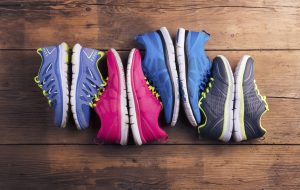 Ryan Hall won his first NCAA championship in 2005 when he ran the 5000 meter race in 13:22.32, beating his teammate by less than a second. That’s just off a 4 minute pace, for those of you who are counting. Gina Kolata from the New York Times wellness blog, caught him standing still long enough to ask him when he decides a shoe is ready to retire. He explained that he replaces his shoes every 200 miles, saying, “I know that my shoes could probably handle a couple of hundred more miles before they are worn out, but my health is so important to me that I like to always make sure my equipment is fresh.” Dr. Jeremy Keene, from our clinic in Roanoke-Cave Spring, Virginia echoed Hall’s emphasis on maintaining your gear; encouraging runners to remember that, “Injury prevention and increased performance are the results of shoes that provide the proper support.”
Ryan Hall won his first NCAA championship in 2005 when he ran the 5000 meter race in 13:22.32, beating his teammate by less than a second. That’s just off a 4 minute pace, for those of you who are counting. Gina Kolata from the New York Times wellness blog, caught him standing still long enough to ask him when he decides a shoe is ready to retire. He explained that he replaces his shoes every 200 miles, saying, “I know that my shoes could probably handle a couple of hundred more miles before they are worn out, but my health is so important to me that I like to always make sure my equipment is fresh.” Dr. Jeremy Keene, from our clinic in Roanoke-Cave Spring, Virginia echoed Hall’s emphasis on maintaining your gear; encouraging runners to remember that, “Injury prevention and increased performance are the results of shoes that provide the proper support.”
Replacing shoes every couple hundred miles isn’t quite as daunting when your shoes come from a corporate sponsor, but when the rest of us are looking at spending between $90-$120, new shoes don’t seem quite so necessary, regardless of the stern warnings about possible injuries from tired-out treads. Gina Kolata decided to get a few other opinions on the topic as well, asking a friend who runs 100+ miles each week how often she purchases replacements. Ms. Davis guesstimated her gear logs about 500 miles before she heads to her local running store. A range of 200 to 500 miles is fairly large though and neither Mr. Hall nor Ms. Davis had too much to say about how they determine when the time is right to start looking for new shoes.
The experts at REI recommend 500 miles as a general guideline but offer an easy set of tests for you to determine for yourself whether or not your shoes need to be benched.
The Press Test: Use your thumb to push on the bottom of your shoe up into the midsole. With new shoes, the midsole should visibly compress into lines or wrinkles. A more worn shoe will compress less when subjected to the same amount of pressure. Heavily compressed midsoles offer little stability or protection and are a sign that it’s time for a new pair.
Further Examination: Check out the wear your shoes have sustained. Are the heels intact? Have you worn parts of the outsole down? Have your shoes molded to your feet (i.e. heel pockets inside the shoe)? If so, your shoes may be ready for retirement.
Feelin’ Good: Finally, pay attention to how your feet, ankles, knees, hops, and back feel after you run. Are you noticing new aches and pains lately? If so, it may be time to change shoes. Alternatively, unexpected friction or blisters may signal overstretched shoes that allow your feet to move around more than they should.
While tests and expert advice are helpful, the real answer for when to replace your shoes rests with you. According to Runner’s World, shoe wear has a variety of causes including:
- The running surface – asphalt wears shoes down faster than grass or dirt,
- The runner’s weight – runners over 200 pounds wear their shoes down more quickly than lighter runners
- Strike style – heel strikers tend to wear out their midsoles more quickly than other running styles
- Shoe type – more protective shoes tend to last longer than minimalist shoe types.
With all those variables, you are the only one who can really say if your shoes are ready for retirement. Using the tests mentioned above should help you determine if you’re ready for a new pair. While rotating between two different pairs of shoes and using your running shoes exclusively for workouts will help shoes last longer, when you know your shoes are past their prime, it’s worth the investment to get a new pair that will help keep you running pain-free.
About the Writer
tech
Runners Can See Improvement with Chiropractic Care

When most people think of the term “chiropractic”, they automatically associate it with “low back pain”. However, the range that chiropractic care covers is far greater than this. Think of the last time you went for a jog, or even a fast paced walk. Consider the strain that you put on your knees, your ankles, and your feet.
The most common complaint that you hear from runners is plantar fasciitis and, while there’s no instantaneous cure for it, chiropractic can do wonders for an ailment such as this. Plantar fasciitis is a manifestation of the tendon being pulled, whether it is caused by form when running or leg muscles pulling in excess. A misalignment of your spine can cause this type of tension anywhere in the body. If the misalignment continues, the strain and wear and tear that is put on your body will continue and worsen. It is important to halt the progression of interferences concerning the spine to avoid degeneration. In combination with therapeutic modalities such as ultrasound, an adjustment restores the normal joint mechanics of the body and reduces the tension that spreads across the bottom of the foot.
Another common complaint from runners is the knee area. Knee pain can stem from a multitude of things, but often times it is due to the patella moving in an irregular pattern, which in turn can put further stress on ligaments and tendons. With the use of therapy, inflammation around the joint can be decreased, diminishing the pain. When joined with an adjustment, movement is increased and functionality is enhanced. In addition, pain that you feel in your knee may be a representation of stress that is coming from other joints in the lower limbs. Chiropractic care identifies where that stress is originating and alleviates the stress from those joints to decrease pain and improve mobility.
Chiropractic care is a full body technique that removes interferences from your spine, allowing normal motion. With a properly functioning nervous system, you can continue daily activities without pain.
About the Writer
tech
You may also be interested in...

What Does a Healthy Spine Feel and Look Like?
Your spine is the backbone of your overall health—literally. It supports your body, protects your nervous system, and helps you move with… Read More
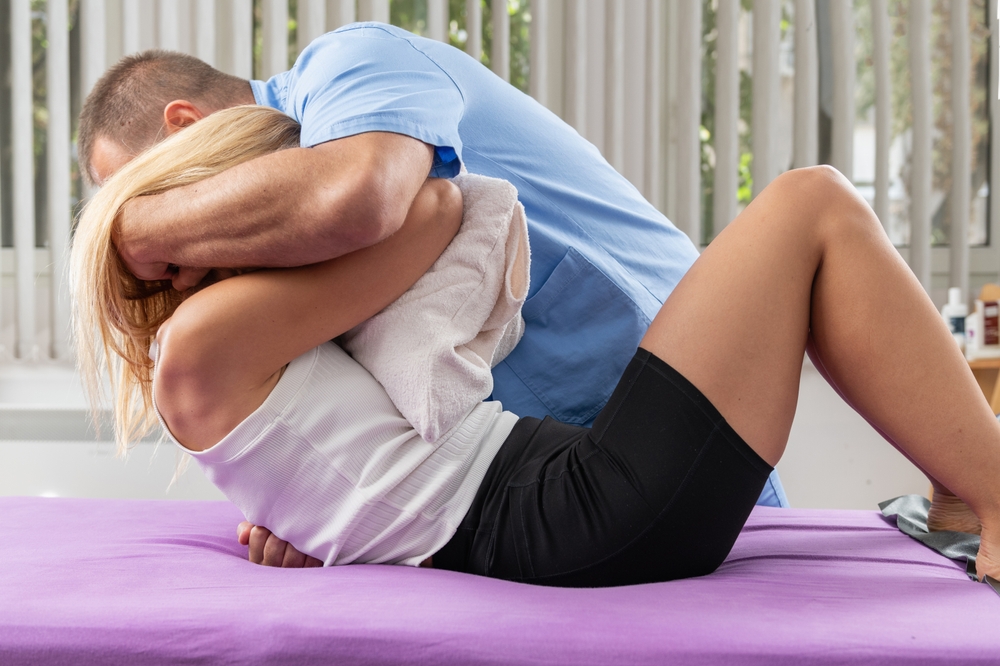
How Do Chiropractic Adjustments Work?
Chiropractic care focuses on the health and alignment of the spine, recognizing its vital role in overall well-being. A central component of… Read More
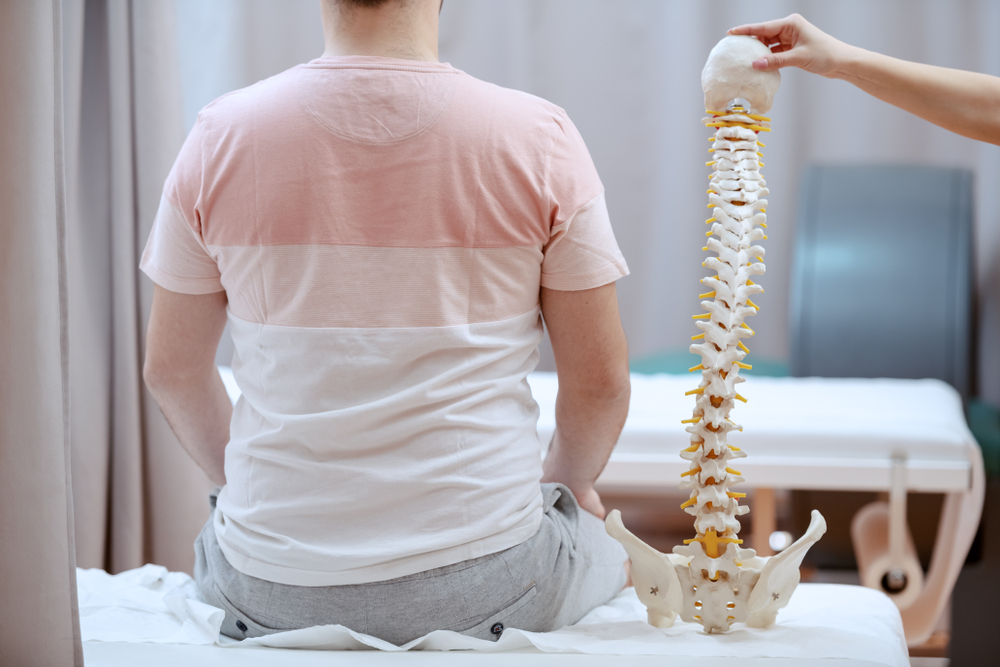
6 Types of Chiropractic Adjustments and How They Work
Chiropractic care is a popular form of healthcare focused on spinal health and overall well-being. Chiropractors use a variety of techniques to… Read More
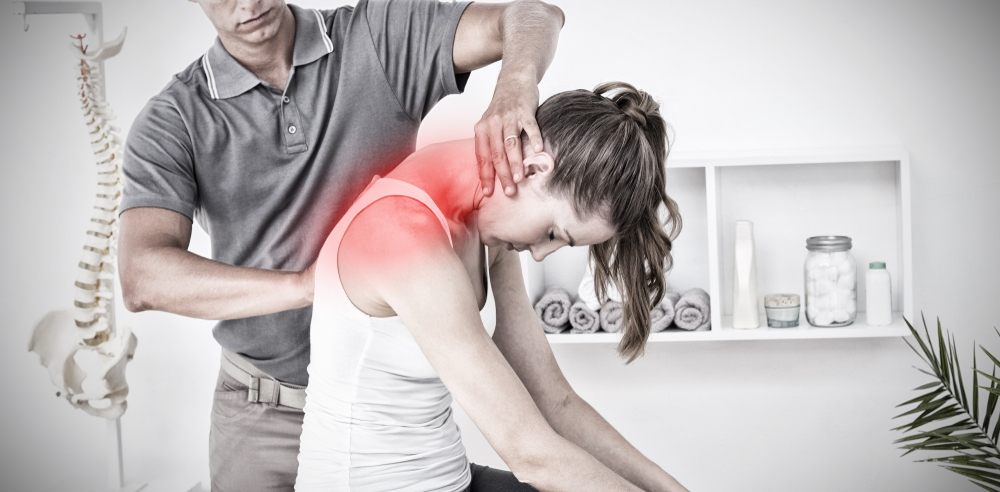
7 Researched Benefits of Chiropractic Adjustments
Chiropractic care focuses on maintaining spinal health and addressing misalignments that can cause a variety of health issues. The practice is growing… Read More
